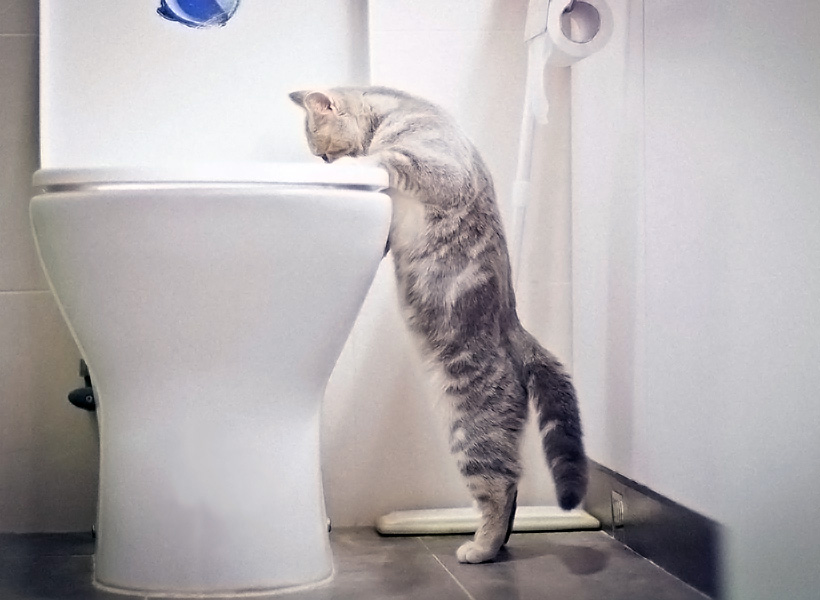Prevent Plumbing Problems: Never Flush Cat Poop Down Your Toilet - Expert Guidance
Prevent Plumbing Problems: Never Flush Cat Poop Down Your Toilet - Expert Guidance
Blog Article
Nearly everybody may have their own unique thinking in relation to Don’t flush cat feces down the toilet.

Intro
As feline owners, it's vital to be mindful of how we dispose of our feline close friends' waste. While it may appear practical to purge cat poop down the bathroom, this practice can have destructive consequences for both the atmosphere and human wellness.
Environmental Impact
Flushing pet cat poop introduces damaging virus and bloodsuckers into the supply of water, presenting a significant risk to aquatic environments. These pollutants can negatively affect aquatic life and concession water high quality.
Wellness Risks
Along with ecological issues, flushing cat waste can likewise position wellness dangers to humans. Cat feces might include Toxoplasma gondii, a parasite that can trigger toxoplasmosis-- a potentially severe disease, particularly for expectant ladies and individuals with damaged body immune systems.
Alternatives to Flushing
Thankfully, there are safer and more accountable ways to dispose of pet cat poop. Consider the adhering to options:
1. Scoop and Dispose in Trash
One of the most common technique of dealing with feline poop is to scoop it right into a biodegradable bag and toss it in the trash. Be sure to use a committed trash inside story and deal with the waste without delay.
2. Use Biodegradable Litter
Go with biodegradable feline litter made from materials such as corn or wheat. These clutters are environmentally friendly and can be safely dealt with in the garbage.
3. Hide in the Yard
If you have a yard, think about burying feline waste in a marked location far from veggie yards and water resources. Be sure to dig deep sufficient to avoid contamination of groundwater.
4. Install a Pet Waste Disposal System
Invest in a pet dog garbage disposal system especially created for feline waste. These systems use enzymes to break down the waste, decreasing odor and ecological influence.
Final thought
Responsible pet possession expands beyond offering food and sanctuary-- it additionally involves correct waste monitoring. By avoiding flushing feline poop down the bathroom and opting for alternate disposal approaches, we can minimize our environmental footprint and protect human health and wellness.
Why Can’t I Flush Cat Poop?
It Spreads a Parasite
Cats are frequently infected with a parasite called toxoplasma gondii. The parasite causes an infection called toxoplasmosis. It is usually harmless to cats. The parasite only uses cat poop as a host for its eggs. Otherwise, the cat’s immune system usually keeps the infection at low enough levels to maintain its own health. But it does not stop the develop of eggs. These eggs are tiny and surprisingly tough. They may survive for a year before they begin to grow. But that’s the problem.
Our wastewater system is not designed to deal with toxoplasmosis eggs. Instead, most eggs will flush from your toilet into sewers and wastewater management plants. After the sewage is treated for many other harmful things in it, it is typically released into local rivers, lakes, or oceans. Here, the toxoplasmosis eggs can find new hosts, including starfish, crabs, otters, and many other wildlife. For many, this is a significant risk to their health. Toxoplasmosis can also end up infecting water sources that are important for agriculture, which means our deer, pigs, and sheep can get infected too.
Is There Risk to Humans?
There can be a risk to human life from flushing cat poop down the toilet. If you do so, the parasites from your cat’s poop can end up in shellfish, game animals, or livestock. If this meat is then served raw or undercooked, the people who eat it can get sick.
In fact, according to the CDC, 40 million people in the United States are infected with toxoplasma gondii. They get it from exposure to infected seafood, or from some kind of cat poop contamination, like drinking from a stream that is contaminated or touching anything that has come into contact with cat poop. That includes just cleaning a cat litter box.
Most people who get infected with these parasites will not develop any symptoms. However, for pregnant women or for those with compromised immune systems, the parasite can cause severe health problems.
How to Handle Cat Poop
The best way to handle cat poop is actually to clean the box more often. The eggs that the parasite sheds will not become active until one to five days after the cat poops. That means that if you clean daily, you’re much less likely to come into direct contact with infectious eggs.
That said, always dispose of cat poop in the garbage and not down the toilet. Wash your hands before and after you clean the litter box, and bring the bag of poop right outside to your garbage bins.
https://trenchlesssolutionsusa.com/why-cant-i-flush-cat-poop/

Do you enjoy reading up on How to Dispose of Cat Poop and Litter Without Plastic Bags? Write a comment below. We'd be interested to know your thinking about this blog posting. In hopes to see you back again later on. For those who liked our page kindly remember to pass it around. Thank you so much for your time invested reading it.
Check It Out Report this page